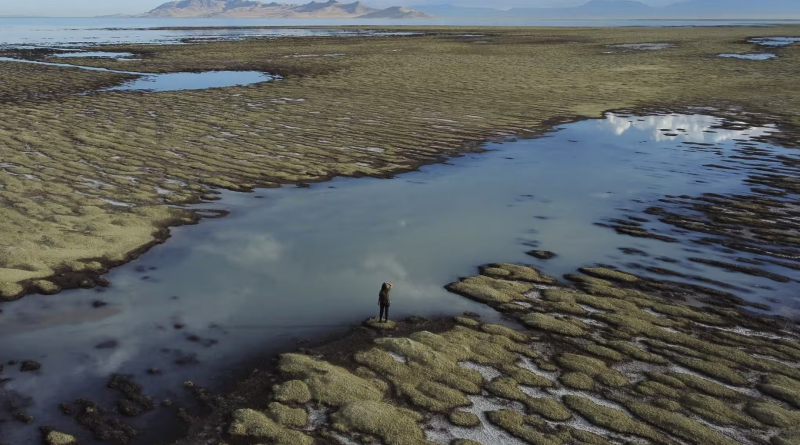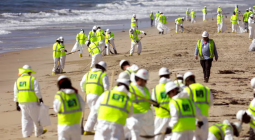Utah’s Great Salt Lake rings climate alarm bells over release of 4.1m tons of carbon dioxide

The Great Salt Lake, near Salt Lake City, Utah, has lost more than 70% of its water. Photograph: Rick Bowmer/AP
For years, scientists and environmental leaders have been raising alarm that the Great Salt Lake is headed toward a catastrophic decline.
Now, new research points to the lake’s desiccating shores also becoming an increasingly significant source of greenhouse gas emissions. Scientists have calculated that dried out portions of the lakebed released about 4.1m tons of carbon dioxide and other greenhouse gases in 2020, based on samples collected over seven months that year.
Their study, published last month in the journal One Earth, suggests that the Great Salt Lake – which is the largest saltwater lake in the western hemisphere – and other shrinking saline lakes across the world could become major contributors of climate-warming emissions. The research also adds to a dire list of environmental consequences brought on by the lake’s precipitous decline.
Last year, environmental and community groups sued Utah officials over failures to save the famous lake from irreversible collapse. In recent decades, as more and more water has been diverted away from the lake to irrigate farmland, feed industry and water lawns, a report last year estimated that the lake had lost 73% of its water and 60% of its surface area. Its decline was accelerated by global heating and a mega-drought in the US south-west.
The declining lake has exposed a dusty lakebed laced with arsenic, mercury, lead and other toxic substances that threaten to increase rates of respiratory conditions, heart and lung disease and cancers. As its volume shrinks, the lake is also becoming saltier and uninhabitable to native flies and brine shrimp. Eventually, scientists have warned that it may be unable to support the 10 million migratory birds and wildlife that frequent it.
“I think the impacts on air quality, the impacts on migratory birds and other wildlife are maybe more pressing, locally,” said Soren Brothers, a climate change curator at Canada’s Royal Ontario Museum, who led the study. “But especially at a time when we are all trying to find ways to reduce our carbon footprint, as Salt Lake City is working to reduce emissions, this desiccating lake is adding some of that back.”
Other research has documented emissions from other saline lakes, including the Aral Sea in central Asia, though more research is needed to fully understand the extent. Both saline and freshwater lakes can act as carbon sinks, he noted – in some cases locking up huge amounts of carbon in their sediments. But as the climate crisis hastens the decline of these lakes, they could begin unleashing large amounts of carbon dioxide that in turn could exacerbate global heating, creating a vicious feedback loop.
Brothers said they hope the study encourages researchers to take more measurements of emissions from across and around Great Salt Lake to better understand how much carbon dioxide and other greenhouse gases it is absorbing and emitting.
“I think this research adds just one more to a long list of reasons we should be working to preserve the lake,” said John C Lin, an atmospheric scientist and associate director at the University of Utah’s Wilkes Center for Climate Science and Policy.
In a study published in June, Lin and his colleagues also found that exposure to particulate pollution from the lakebed was highest for Pacific Islanders and Hispanic residents, and lowest among white residents – probably because minority and low-income communities are more likely to lie in the path of wind-blown dust from the lake. Preserving the lake’s levels would decrease dust pollution and reduce stark racial disparities in exposure to air pollution, the researchers found.
“There’s now a lot of attention on the lake and that gives me hope,” he said. “Because the crisis has galvanized the community to try to do something.”
He’s part of a team of researchers helping to turn the lake’s fate around by 2034, when Utah is set to host the Winter Olympics. “There are a lot of eyes on Utah and Salt Lake City right now. So we have to get it right.”





